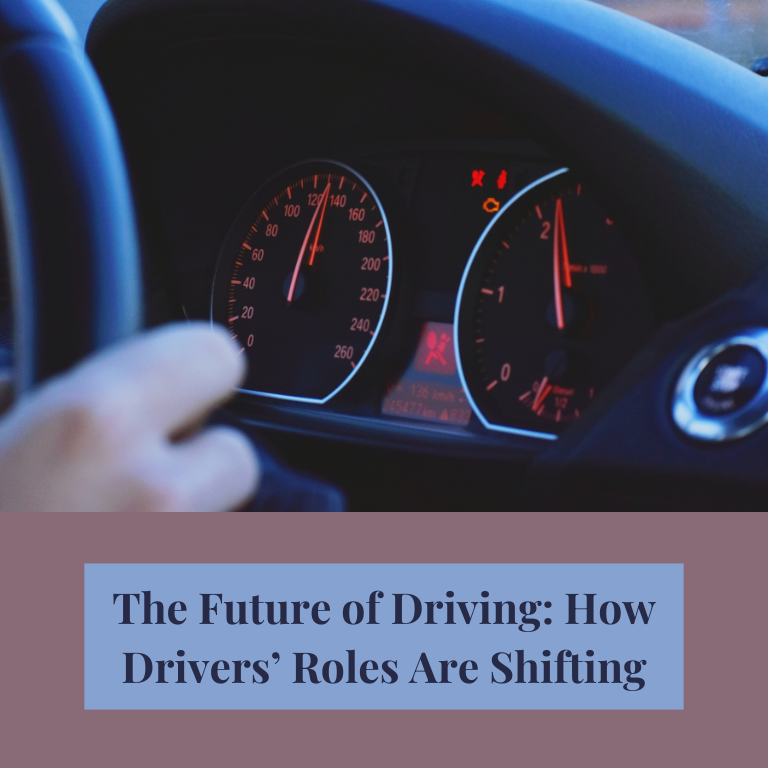As technology continues to reshape industries around the globe, the automotive sector is experiencing a profound transformation. With the rise of autonomous vehicles, advanced driver-assistance systems (ADAS), electric cars, and connected infrastructure, the role of the driver is evolving in ways that were once thought to be the stuff of science fiction. In this article, we will explore how drivers’ roles are shifting, what the future of driving might look like, and the impact these changes will have on society and individuals.
The Shift Toward Autonomy: From Drivers to Passengers
One of the most significant changes in the future of driving is the shift from human-controlled vehicles to autonomous systems. Autonomous vehicles (AVs), also known as self-driving cars, use a combination of cameras, sensors, machine learning, and artificial intelligence (AI) to navigate roads without the need for human intervention. While fully autonomous vehicles are not yet ubiquitous, levels of autonomy are gradually increasing.
Today, many vehicles already come equipped with ADAS, which include features like adaptive cruise control, lane-keeping assistance, and automatic emergency braking. These systems reduce the need for constant human input, allowing drivers to take a more passive role in the operation of the vehicle. Eventually, as autonomous technology advances, the driver’s role may shift entirely from active control to that of a passenger.
Five Levels of Vehicle Autonomy
Understanding how drivers’ roles are shifting requires familiarity with the five levels of vehicle autonomy, which range from no automation to full self-driving capability:
Level 0 (No Automation): The driver controls all aspects of the vehicle, with no automated systems assisting.
Level 1 (Driver Assistance): Vehicles at this level have minimal automation, such as adaptive cruise control or automatic braking, but drivers still maintain control.
Level 2 (Partial Automation): Cars can control both steering and acceleration/deceleration, but the driver must remain engaged and ready to take over at any time.
Level 3 (Conditional Automation): Vehicles can manage most driving tasks, but human intervention is required in complex situations or emergencies.
Level 4 (High Automation): Cars can handle driving in specific conditions without human input, though manual control may still be needed in extreme situations.
Level 5 (Full Automation): The vehicle is completely autonomous, requiring no human intervention for driving under any circumstances.
As vehicles progress through these levels, the driver’s role gradually diminishes. In a Level 5 autonomous vehicle, the driver may no longer be required at all, becoming a passenger who simply sets the destination.
Impact of Autonomous Vehicles on Driving Skills
As automation increases, concerns arise about the erosion of traditional driving skills. In a world where cars drive themselves, the need for drivers to understand how to navigate roads, respond to hazards, or even park may become less relevant. While this could reduce the frequency of accidents caused by human error, it also raises questions about how prepared individuals will be to take over driving in emergencies, especially in Level 3 or 4 vehicles that still require occasional human input.
Training drivers for these transitional roles will likely become a priority in the coming years. Simulations, specialized driving schools, or even augmented reality-based training systems may be needed to teach drivers how to effectively collaborate with autonomous systems and intervene when necessary.
Electric Vehicles and the Changing Role of Drivers
The shift toward electric vehicles (EVs) is another factor transforming the driving experience. As more consumers and governments embrace sustainability, EVs are gaining popularity, with sales growing rapidly worldwide. While EVs do not necessarily alter the mechanics of driving as much as autonomy does, they bring new responsibilities and considerations for drivers.
EV drivers must become familiar with charging infrastructure, battery management, and range optimization—skills that were not necessary with internal combustion engine (ICE) vehicles. Drivers must plan routes with charging stations in mind, especially on longer trips, and consider factors like charging times and battery health. As EV technology advances, these tasks may become more automated, but for now, drivers must adapt to these new responsibilities.
Connected Vehicles: Driving in a Data-Driven World
Connected vehicles are another key element in the evolving landscape of driving. These cars are equipped with technology that allows them to communicate with other vehicles (Vehicle-to-Vehicle, or V2V), infrastructure (Vehicle-to-Infrastructure, or V2I), and even pedestrians (Vehicle-to-Everything, or V2X). This connectivity enables real-time data sharing that can improve road safety, reduce traffic congestion, and optimize driving efficiency.
For example, connected cars can receive real-time updates about traffic jams, accidents, or road closures and automatically adjust routes to avoid delays. In cities equipped with smart infrastructure, connected vehicles could communicate with traffic lights to ensure smoother flows of traffic. For drivers, this technology means less reliance on traditional navigation and decision-making. Instead, the vehicle, aided by external data sources, can make more informed choices to ensure a safer and more efficient journey.
The Role of Drivers in Mixed Traffic Environments
As autonomous vehicles gradually become more common, we will enter a period where human-driven cars and autonomous vehicles share the road. This mixed traffic environment presents unique challenges for drivers. Human drivers will need to adapt to how autonomous cars behave, especially since these vehicles may follow stricter rules of the road and avoid unpredictable maneuvers that humans often make.
In such environments, drivers may need to adjust their behavior, becoming more aware of how autonomous systems function. This transition could also create new traffic regulations or road designs that better accommodate the coexistence of human and AI-driven vehicles.
The Human Factor: Trust and Acceptance of Autonomous Systems
One of the most significant challenges for the future of driving is human acceptance of autonomous systems. Trusting a car to drive itself requires a psychological shift, and for many drivers, the idea of relinquishing control is uncomfortable. Studies show that while there is growing interest in self-driving technology, there are also concerns about safety, reliability, and ethical decision-making.
To ease these concerns, automakers and tech companies must ensure that autonomous systems are not only safe but also transparent. Clear communication about how these systems function and what their limitations are will be key in building public trust. Additionally, the gradual rollout of increasingly advanced driver-assistance systems will likely help drivers become more comfortable with the idea of automation over time.
The Future of Driving Jobs
The rise of autonomous vehicles also has implications for jobs in the transportation sector. Professional drivers, including truckers, delivery drivers, and ride-hailing service providers, may see their roles change or even disappear as automation becomes more prevalent. However, this shift may also create new jobs in areas such as vehicle maintenance, AI system monitoring, and data analysis.
Retraining and upskilling initiatives will be critical for workers affected by automation. Governments, educational institutions, and private companies will need to collaborate on programs that prepare the workforce for the evolving demands of the transportation industry.
Looking Ahead: The Road to Fully Autonomous Driving
While fully autonomous vehicles may not dominate roads in the immediate future, the transition is well underway. Drivers today are already experiencing changes in their roles as vehicles become more automated, connected, and sustainable. From managing EV charging to coexisting with autonomous cars, the driver of tomorrow will need to adapt to a constantly evolving transportation ecosystem.
As we move closer to Level 5 autonomy, where the driver becomes a passenger, questions about regulation, safety, and ethical considerations will need to be addressed. However, one thing is clear: the future of driving will be shaped by technology, and the role of the driver will never be the same again.















